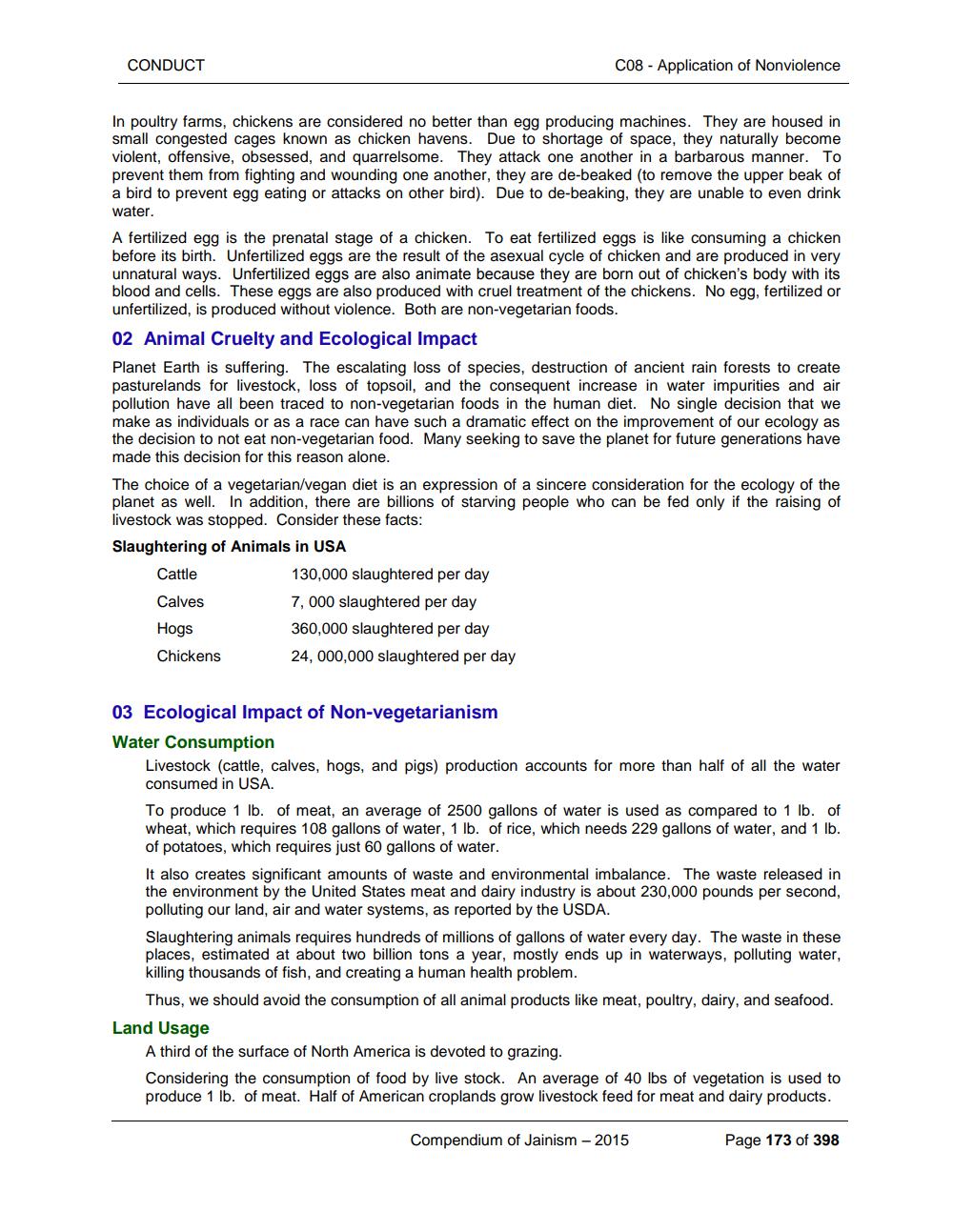________________
CONDUCT
C08 - Application of Nonviolence
In poultry farms, chickens are considered no better than egg producing machines. They are housed in small congested cages known as chicken havens. Due to shortage of space, they naturally become violent, offensive, obsessed, and quarrelsome. They attack one another in a barbarous manner. To prevent them from fighting and wounding one another, they are de-beaked (to remove the upper beak of a bird to prevent egg eating or attacks on other bird). Due to de-beaking, they are unable to even drink water. A fertilized egg is the prenatal stage of a chicken. To eat fertilized eggs is like consuming a chicken before its birth. Unfertilized eggs are the result of the asexual cycle of chicken and are produced in very unnatural ways. Unfertilized eggs are also animate because they are born out of chicken's body with its blood and cells. These eggs are also produced with cruel treatment of the chickens. No egg, fertilized or unfertilized, is produced without violence. Both are non-vegetarian foods. 02 Animal Cruelty and Ecological Impact Planet Earth is suffering. The escalating loss of species, destruction of ancient rain forests to create pasturelands for livestock, loss of topsoil, and the consequent increase in water impurities and air pollution have all been traced to non-vegetarian foods in the human diet. No single decision that we make as individuals or as a race can have such a dramatic effect on the improvement of our ecology as the decision to not eat non-vegetarian food. Many seeking to save the planet for future generations have made this decision for this reason alone. The choice of a vegetarian/vegan diet is an expression of a sincere consideration for the ecology of the planet as well. In addition, there are billions of starving people who can be fed only if the raising of livestock was stopped. Consider these facts: Slaughtering of Animals in USA Cattle
130,000 slaughtered per day Calves
7, 000 slaughtered per day Hogs
360,000 slaughtered per day Chickens
24,000,000 slaughtered per day
03 Ecological Impact of Non-vegetarianism Water Consumption
Livestock (cattle, calves, hogs, and pigs) production accounts for more than half of all the water consumed in USA. To produce 1 lb. of meat, an average of 2500 gallons of water is used as compared to 1 lb. of wheat, which requires 108 gallons of water, 1 lb. of rice, which needs 229 gallons of water, and 1 lb. of potatoes, which requires just 60 gallons of water. It also creates significant amounts of waste and environmental imbalance. The waste released in the environment by the United States meat and dairy industry is about 230,000 pounds per second, polluting our land, air and water systems, as reported by the USDA. Slaughtering animals requires hundreds of millions of gallons of water every day. The waste in these places, estimated at about two billion tons a year, mostly ends up in waterways, polluting water, killing thousands of fish, and creating a human health problem.
Thus, we should avoid the consumption of all animal products like meat, poultry, dairy, and seafood. Land Usage
A third of the surface of North America is devoted to grazing. Considering the consumption of food by live stock. An average of 40 lbs of vegetation is used to produce 1 lb. of meat. Half of American croplands grow livestock feed for meat and dairy products.
Compendium of Jainism - 2015
Page 173 of 398




